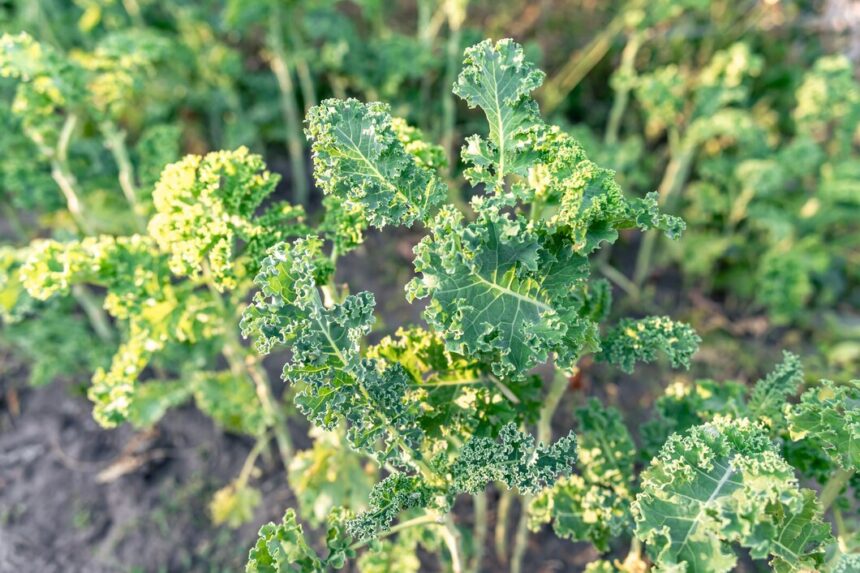Kale, known for its nutritional benefits and robust growth, has become increasingly popular in South Africa. Farmers are continually seeking methods to enhance the quality and yield of this leafy green. This article delves into several effective techniques that South African farmers can adopt to maximize their kale production.
1. Optimized Soil Management
The foundation of any successful crop lies in the soil. For kale, maintaining soil health is crucial. Here are some key practices:
- Soil Testing: Regular soil testing helps in understanding nutrient deficiencies or imbalances. Corrective measures, such as adding the appropriate fertilizers, can then be taken.
- Organic Matter: Incorporating compost and organic matter into the soil improves its structure, water retention, and nutrient-holding capacity.
- pH Balance: Kale thrives in slightly acidic to neutral soil (pH 6.0-7.5). Lime can be added to raise pH, while sulfur can lower it.
2. Efficient Irrigation Systems
Water management is critical in kale cultivation. Over-watering or under-watering can significantly affect yield and quality.
- Drip Irrigation: This method delivers water directly to the root zone, reducing water wastage and ensuring consistent soil moisture.
- Mulching: Mulching with organic materials helps retain soil moisture, suppress weeds, and maintain soil temperature.
3. Integrated Pest Management (IPM)
Pests and diseases can devastate kale crops. Implementing an IPM strategy can help in managing these threats effectively.
- Biological Controls: Introducing natural predators such as ladybugs can control aphid populations.
- Crop Rotation: Rotating kale with non-cruciferous crops helps break pest and disease cycles.
- Resistant Varieties: Planting pest-resistant kale varieties can reduce the need for chemical interventions.
4. Nutrient Management
Proper nutrition is vital for kale’s growth and development.
- Fertilization: Balanced fertilizers with an emphasis on nitrogen, phosphorus, and potassium are essential. Foliar feeding can also provide a quick nutrient boost.
- Micronutrients: Ensuring adequate levels of micronutrients like magnesium, calcium, and iron can prevent deficiencies that impair growth.
5. Planting Techniques
Adopting appropriate planting techniques can influence the growth and yield of kale.
- Spacing: Proper plant spacing ensures good air circulation, reducing disease risk and promoting robust growth.
- Succession Planting: Planting kale in intervals can ensure continuous harvests, improving yield over the season.
6. Climate Adaptation Strategies
Given South Africa’s diverse climate, adapting farming practices to local conditions is crucial.
- Shade Nets: Using shade nets can protect plants from extreme heat and reduce water stress.
- Windbreaks: Establishing windbreaks can protect kale from wind damage, which is particularly important in windy areas.
7. Post-Harvest Handling
Quality can be maintained through proper post-harvest practices.
- Timely Harvesting: Harvesting kale at the right maturity stage ensures peak nutritional content and taste.
- Cooling: Rapid cooling post-harvest extends shelf life and maintains quality.
- Proper Storage: Storing kale in cool, humid conditions prevents wilting and spoilage.
8. Use of Technology
Modern technology can play a significant role in enhancing kale production.
- Precision Farming: Using sensors and GPS technology to monitor and manage crops can lead to more efficient farming practices.
- Drones: Drones can be used for monitoring crop health, applying fertilizers, and even detecting pest infestations.
By integrating these techniques, South African kale farmers can significantly enhance both the quality and yield of their crops. Continuous learning and adaptation to new methods and technologies will be key to staying ahead in the competitive agricultural landscape. Embracing these practices not only boosts productivity but also contributes to sustainable farming, ensuring long-term benefits for both farmers and the environment.
Join 'Farmers Mag' WhatsApp Channel
Get the latest Farming news and tips delivered straight to your WhatsApp
CLICK HERE TO JOIN






